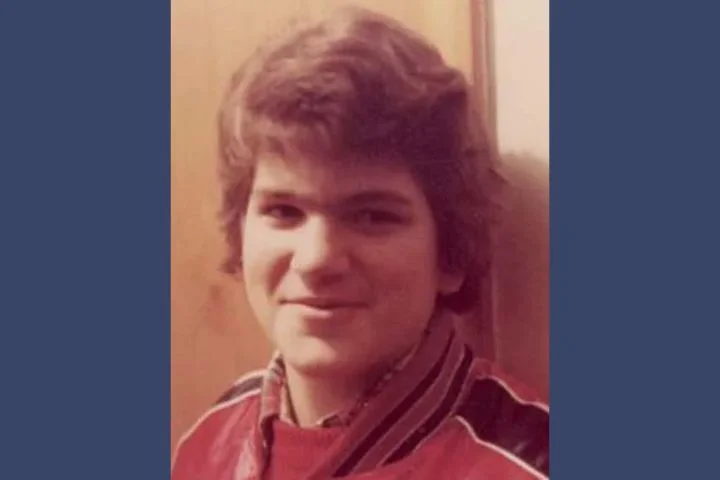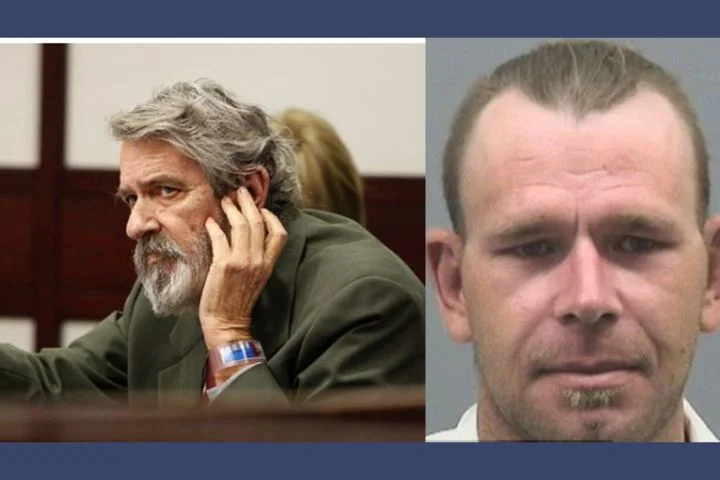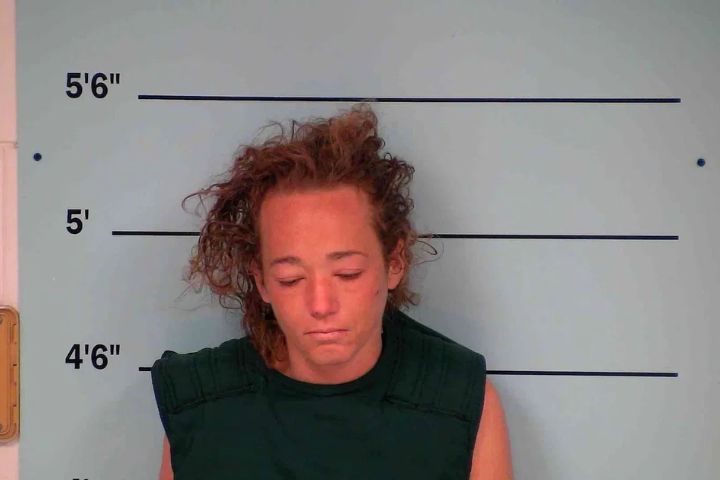William Comeans spent most of his evening on January 7, 1980, helping his father, Robert, work on the family car at their New Rome, Ohio home. Shortly before 9:00 pm, the 14-year-old walked to a neighbor’s home to pick up his younger sister, who was attending a birthday party. The party was still going on when Bill arrived, and his sister told him that she wanted to stay for a little while longer. Bill agreed to come back later, then returned home and let his mother know his sister was running late.
After taking a fresh cup of coffee into the garage for his father, Bill went out into the front yard and started taking down some of the Christmas decorations he had put up a few weeks earlier. Robert finished up working in the garage around 9:20 pm; he went out front to see if his son needed any help, but was unable to find him. It appeared that he had left abruptly while in the middle of taking down Christmas lights.
Robert knew that Bill had to pick up his sister from a home down the street, but he didn’t think his son would have left without saying something to him. Bill was in the habit of telling one of his parents before he went anywhere outside of his own yard, even if he were just going to a neighbor’s house. Robert checked with his wife, Carol, to see if Bill had told her he was leaving; she hadn’t spoken to him since he had told her that the party was running late.
Robert walked down to the house where the party was being held. After learning that Bill had not returned to pick up his sister, Robert knew that something had to be wrong. He and a neighbor immediately started searching the neighborhood for Bill. They found him about 20 minutes later; he was lying facedown in a snow-filled ditch with his scarf knotted tightly around his neck. He appeared to have been strangled to d*eath.
Bill was found just two blocks away from his home, near the Conrail railroad tracks. His older brothers, Michael and Bob, ran to the scene when they heard their father yelling for help. Michael used his pocketknife to cut the scarf off of Bill’s neck, and Bob started to administer CPR. Almost immediately, frantic neighbors started to gather around and watch.
When police arrived at the scene, they were met by a crowd of around 40 people, most of them in tears. Officers quickly herded them to the side to make room for the incoming ambulance. Bill’s brother continued performing CPR until the ambulance crew arrived and rushed Bill to the hospital, where doctors tried in vain to save his life. He was pronounced dead at 11:00 pm.
Detectives struggled to piece together exactly what had happened to Bill. His father was convinced that someone had abducted him from the front yard and then ki*lled him, but investigators found no signs of a struggle anywhere near Bill’s home. They concentrated on searching for clues in the area where Bill’s body had been found, but the crime scene had been contaminated by the dozens of neighbors who had rushed to Bill’s side.
The doctors who had tried to save Bill noted that, except for the marks that the scarf had left around his neck, there were no other wounds on Bill’s body. He had no defensive wounds or bruises; it appeared that he hadn’t tried to fight off his attacker. None of his personal belongings had been taken, so robbery was ruled out as a possible motive.
After performing an autopsy, the county coroner determined that Bill had died from “cardiac arrest due to compression of the neck from ligature.” He noted that Bill’s body showed petechial hemorrhaging, a trademark of strangulation; his d*eath was ruled a homicide. In addition, toxicology reports showed that Bill had Valium in his bloodstream when he died. Valium is a sedative used most commonly to treat anxiety, and police were unable to determine how Bill might have gotten the drug. They found nothing to indicate that Bill had ever used drugs before, and no one in his family had access to the drug.
At the time of his de*ath, Bill was a freshman at Westland High School in Galloway, Ohio. During a press conference, a law enforcement official described him as being a perfect student, perfect child, and perfect citizen. He was a piano player with a deep love of music; he was in his high school choir and performed in school musicals. He was close with his family and had a best friend and a girlfriend at school.
Although Bill appeared to be a well-adjusted teenager, his life wasn’t completely trouble-free. Deputies with the Franklin County Sheriff’s Office were quite familiar with Bill; in the fall of 1979, he had gone to police after finding several threatening letters in his school locker; the notes contained ominous messages alluding to the fact that he was going to die. He had turned the letters over to law enforcement, but they had been unable to determine their origin.
The letters were just the beginning of Bill’s troubles. One night in September 1979, he was attacked while he was riding his bike home from a friend’s house. The assault occurred on a trail that cut through a wooded area behind Prairie-Lincoln High School; Bill was about 50 yards into the woods when two men attacked him from behind and knocked him off his bike. Bill was unable to get a look at his assailants before they placed a plastic garbage bag over his head. The two men then attempted to strangle Bill with the inner tube of a bike tire.
Although Bill felt as if he were going to pass out, he was able to fight off his attackers and run home. His parents took him to file a police report, and detectives noted that he had bruising on his neck consistent with a strangulation attempt. Investigators went to the trail where Bill said the attack occurred and located his bicycle, a trash bag, and a bike tire. They also found a handwritten note proclaiming, “he was warned.”
Since Bill was unable to give a description of the two men who attacked him, detectives had little to go on. The case had already gone cold when, a month later, Bill was assaulted again. The second attack occurred on the evening of October 22; Bill was collecting money from his newspaper delivery route customers when he saw a light blue or turquoise car, believed to be a Ford Falcon, pull over near where he was walking. As soon as he walked past the car, two men jumped out and attacked him from behind.
According to Bill, the men put a rope around his neck and attempted to strangle him while dragging him into some bushes. He apparently lost consciousness, as he woke up under a bush about five hours later. It was nearly 1:00 am when he managed to get up and walk towards his home, where he found his parents and siblings frantically trying to locate him.
His parents took him to the hospital; doctors treated him for a gash on his head and noted that he had significant rope burns around his neck. Once he was discharged, he went to the police station to file his second assault complaint. He told investigators that he had been attacked by two white males who were in their late teens or early twenties, but he was unable to give a physical description of either man.
Detectives appeared to be somewhat skeptical of Bill’s report; they asked him if he would be willing to take a polygraph examination about the attack. He agreed to do so, and the test seemed to indicate that he was being deceptive about certain parts of his story. Some of the investigators believed that Bill knew who had attacked him and was lying out of fear, while others thought he might have made the entire story up. The case was still under investigation when Bill was m*urdered.
Detectives interviewed Bill’s friends and teachers, but they were never able to develop any potential persons of interest or suspects in his mur*der. Although his family was desperate for answers and did everything they could to keep the case in the public eye, the investigation quickly went cold.
During the initial days following Bill’s mur*der, residents of New Rome had been fearful that there was a killer on the loose in their neighborhood. As time went by, however, the fear began to subside and it had almost completely dissipated by July 1980, when a series of bizarre events would revive their fear and propel it to new heights.
Beginning that July, eight different households on Maple Avenue started receiving threatening letters that were reminiscent of those that Bill had found in his locker nearly a year earlier. All of the families lived within 200 yards of Bill’s house, and they all — including the Comeans — began receiving identical letters approximately every two weeks. Sometimes the letters arrived in the mail, other times they were hand-delivered by an unknown person overnight. Residents found them taped to their cars or tied to their porches with leather belts. The entire neighborhood was gripped with fear.
Alean Tope, one of the letter recipients, told reporters that she wasn’t sure if the letters were supposed to be a sick joke or not, but she feared that they had been written by someone who was about to “go off the deep end” and she feared for her safety.
Detectives believed that it was possible the letters were nothing more than a cruel hoax, but they admitted that there was a chance they represented a real threat. They canvassed the neighborhood constantly, but were unable to catch the culprit in the act.
Although the letters sent over the summer had been typed, those mailed in September were handwritten. Investigators determined that all of the letters had been written by the same person, but the handwriting did not match that found on the notes that Bill had received. All of the notes were brief, stating things like “time is short” and “UR next.” One letter warned that “Parents should guard their children carefully.”
The letters continued until Halloween, then stopped as suddenly as they had started. Bill’s father told a reporter that everyone was scared to de*ath, worried that there was a psychopath lurking in the shadows. Children weren’t allowed to go outside without an adult, and the once peaceful street had become like an armed camp.
The fear remained until December 1980, when officials announced that they had arrested the person responsible for sending the letters. Residents were shocked when they learned that one of their own had been charged with the crime: Alean Tope, who had expressed concerns about her safety, admitted that she was the guilty party.
Police had become suspicious of her after she repeatedly called to report that she had been the victim of a crime. She first claimed that someone had tried to abduct her a block away from her house; she later reported that she was receiving harassing phone calls and that someone had broken into her house. Investigators had been unable to substantiate any of her claims, and eventually started to view her as a suspect. When she refused to give them a handwriting sample, they obtained a search warrant and went through her desk at work. It didn’t take long for them to confirm that she was the letter writer.
Alean had a nervous breakdown that November, shortly after she sent the final round of letters. Doctors believed that she suffered from a multiple personality disorder, but she was never officially diagnosed as such. Although she admitted writing the letters, she never offered any insight into why she had done such a thing. Her neighbors were appalled, especially Carol Comeans. She had considered Alean to be a good friend and couldn’t believe she had done such a terrible thing.
Investigators were able to rule Alean out as a potential suspect in Bill’s mur*der; although she appears to have taken inspiration from the crime, it was clear that she wasn’t involved. Bill’s k*iller was never identified; the case, though long cold, is still open. Bill’s younger sister, Kathleen, has been instrumental in making sure that detectives haven’t forgotten about her murd*ered brother.
Detectives remain divided about whether or not Bill was attacked and mu*rdered. Some investigators theorized that he might have been the victim of an accidental suicide by autoerotic asphyxiation; they asked for the opinion of experts at the FBI, who determined that this was not the case. Bill’s d*eath remains listed as a homicide.
William Comeans was 14 years old when he was murd*ered in 1980. His younger sister, Kathleen, started a Twitter account (@BillComeans) to bring awareness to his case; her posts, which often include pictures of Bill and other family members, are a poignant reminder of the life that was lost. If you have any information about Bill’s mu*rder, please contact the Franklin County Sheriff’s Office at 614–525–3333.






